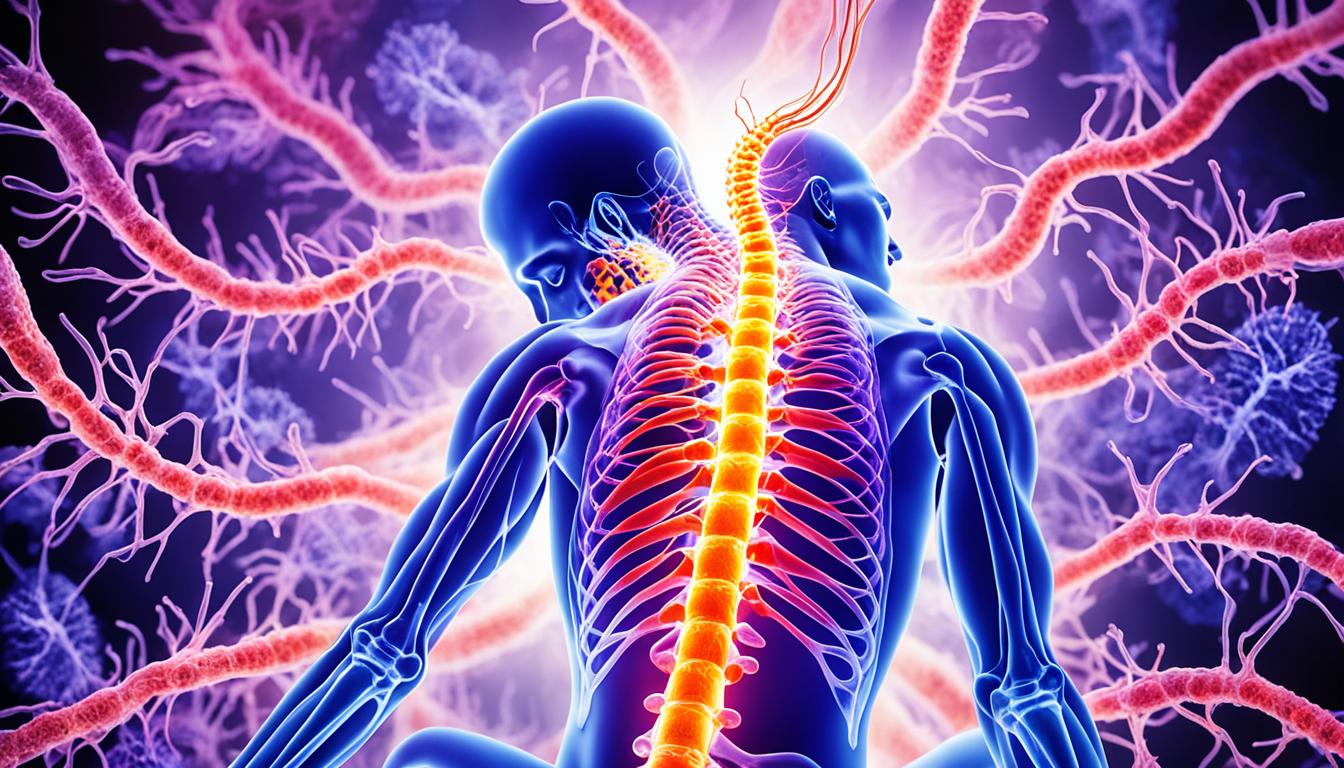Spinal headaches, also called low-pressure headaches, happen when there’s a leak in spinal fluid. This leak reduces the pressure on the brain and spine, causing pain. Common reasons for these headaches are spinal taps, spinal injuries, and diseases that make tissue weak.
People might feel a constant or throbbing pain in their heads or have symptoms like migraines. They could also feel sick to their stomach, throw up, have trouble thinking, or feel more pain when they change positions. Doctors use different tests to confirm if someone has a spinal headache, including blood work and scans.
Doctors treat spinal headaches in several ways. Starting with simple things like lying down and drinking more water, they might go on to more serious treatments like surgery or using blood patches in the spine. Lately, using stem cells is becoming a focused area of research because these cells can help repair and heal the damage that causes spinal headaches.
Key Takeaways:
- Spinal headaches happen because of a leak in spinal fluid, reducing pressure in the brain and spine.
- Causes of spinal headaches can be from spinal taps, injuries, or diseases weakening tissue.
- People might experience headache pain, nausea, vomiting, and confusion.
- Diagnosis includes tests like blood work and scans of the fluid around the spine.
- Treatments range from simple rest and drinking water to more complex solutions like surgery.
Stem Cell Therapy: A Promising Treatment for Spinal Headaches
Stem cell therapy shows hope for people with spinal headaches. Studies are looking into using mesenchymal stem cells (MSCs) to help with spinal injuries and disc problems. This research shows that stem cells might help treat spinal headaches.
MSCs can help repair tissues and lower swelling, which may reduce spinal headache pain. They also help control the immune system. This makes a better environment for healing.
These treatments aim to fix damaged tissues, improve the spinal cord’s surface, and balance fluid around the brain. The goal is to bring lasting relief from spinal headaches.
Scientists are also looking at using stem cell products called exosomes and hydrogels for disc issues. These new ideas could make stem cell therapy even better for spinal headaches.
Advantages of Stem Cell Therapy for Spinal Headaches:
- Promotes tissue regeneration
- Reduces inflammation
- Alleviates pain
- Regulates immune response
- Repairs damaged tissues
- Restores dura mater integrity
- Improves cerebrospinal fluid levels
More study is necessary to know fully the benefits of stem cell therapy for spinal headaches. But the start looks good. It could be an effective choice for people who haven’t found help with usual treatments.
As we learn more about stem cells, there’s hope for better, new ways to treat spinal headaches. This could make a real difference in people’s lives.
Conclusion: Advancements in Stem Cell Therapy for Spinal Headaches
To wrap it up, spinal headaches can be a big issue after spinal operations. They bring a lot of pain and can stop people from doing daily tasks. The ways we normally treat these headaches can be simple or very complex.
Now, stem cell therapy is getting a lot of attention for these headaches. Stem cells seem to help heal tissues, cut down on swelling, and adjust how the immune system works. Studies have looked into using mesenchymal stem cells for problems like spinal cord injuries and intervertebral disc degeneration. These issues are linked to why people get spinal headaches.
We still need to study more to really grasp how stem cell therapy can help with spinal headaches. But, for some patients, this could be a new and hopeful option. As we keep moving forward in stem cell research, there’s a lot of hope for new and better ways to deal with spinal headaches.

